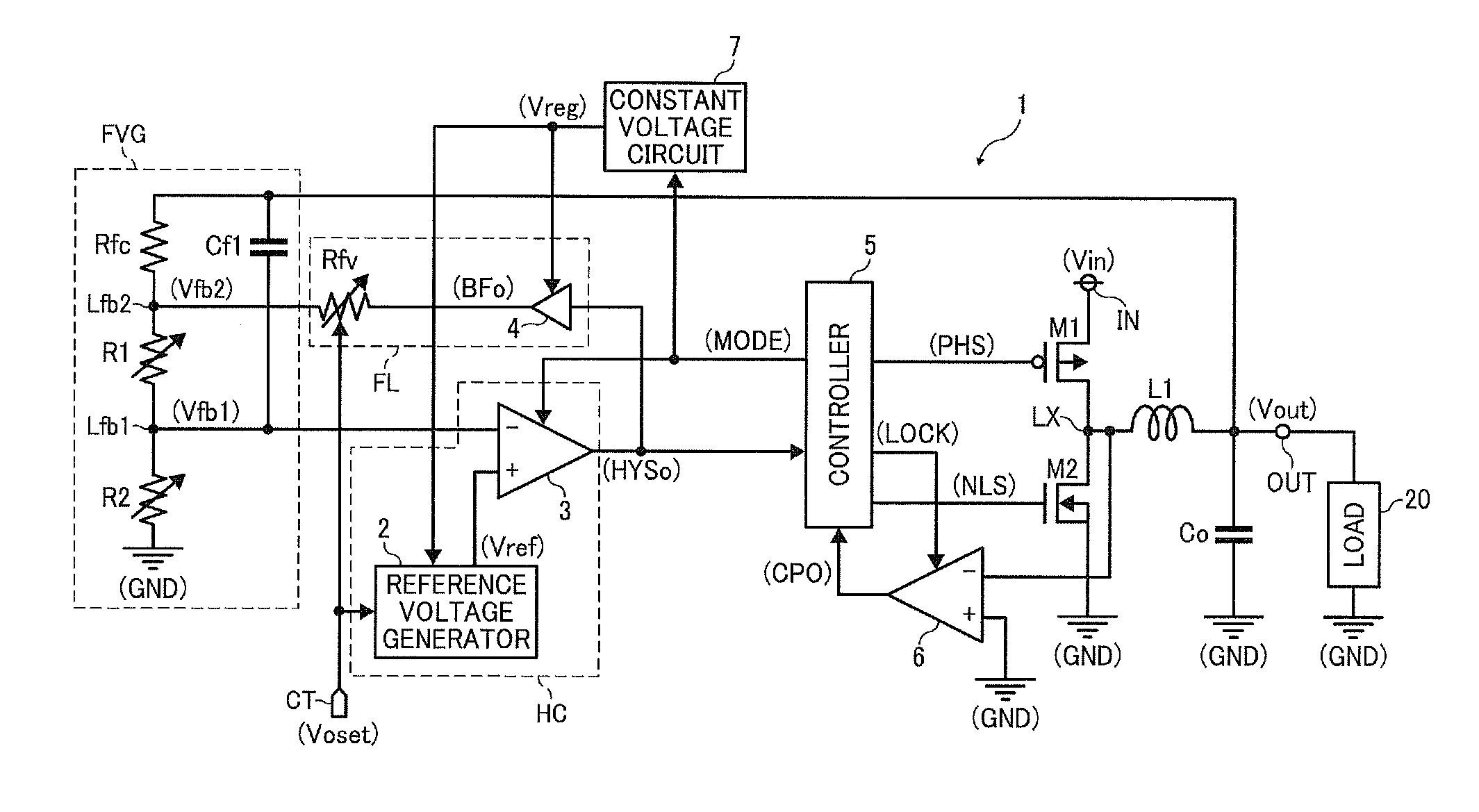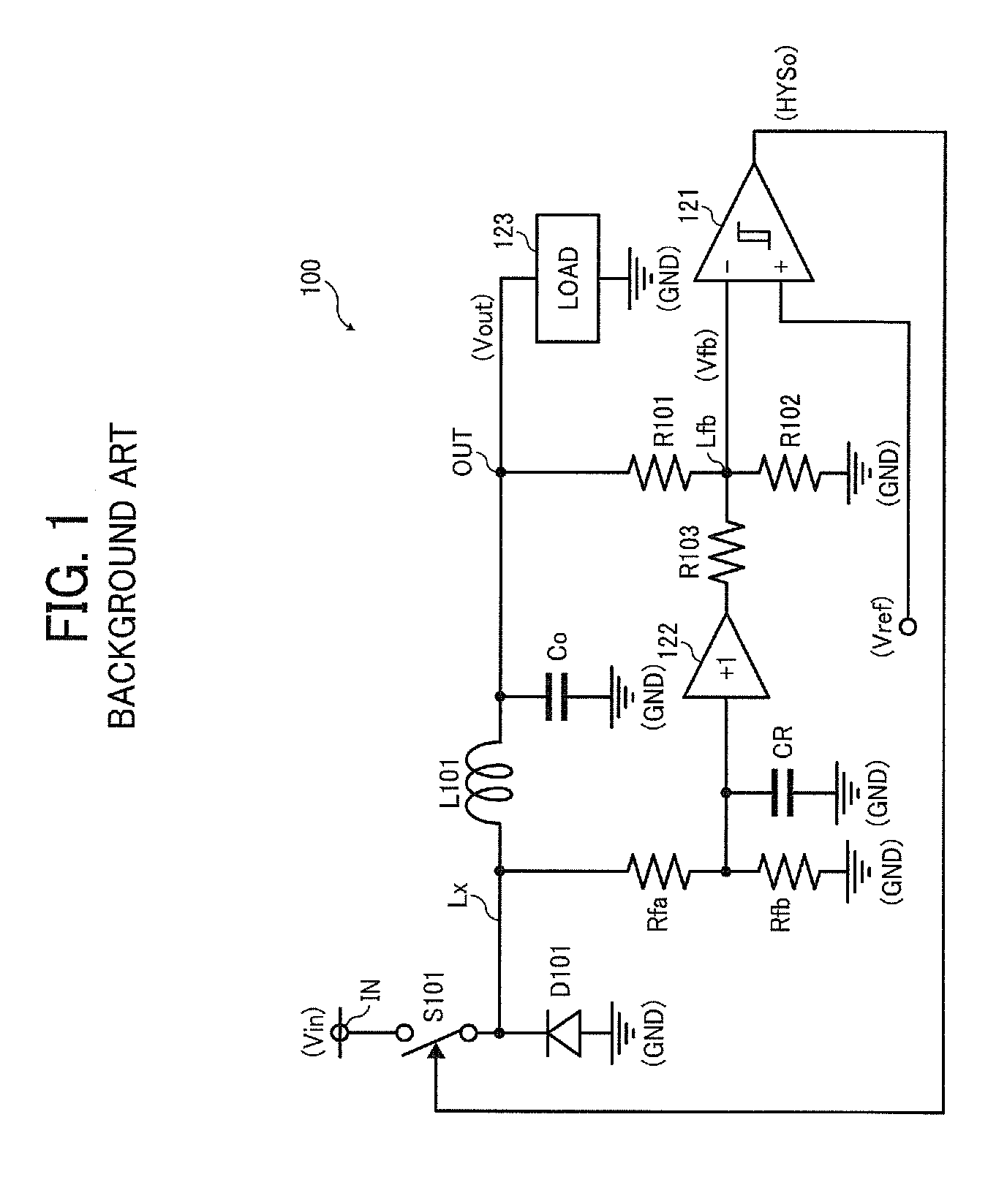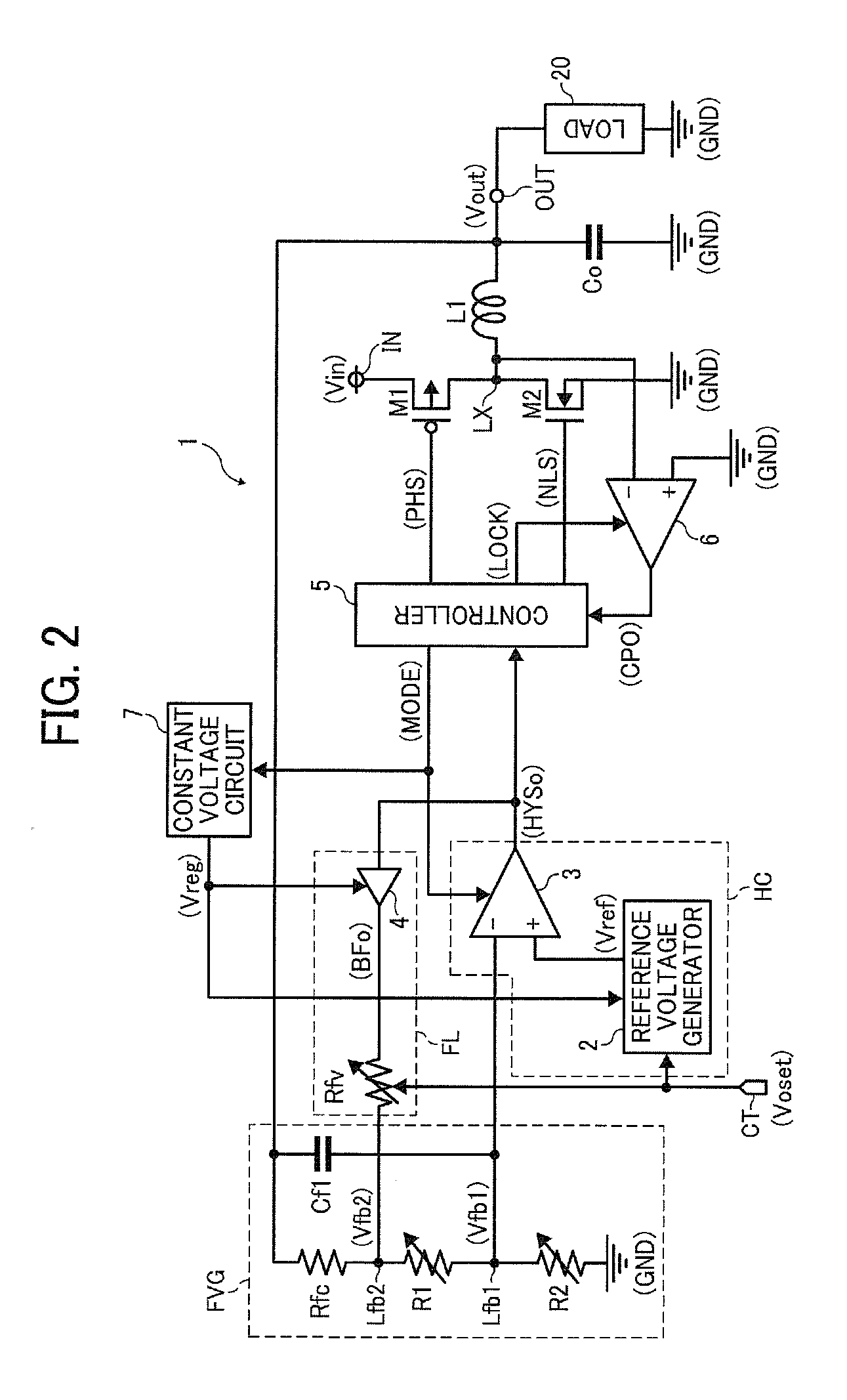Hysteretic switching regulator and control method used therein
a switching regulator and hysteretic technology, applied in the direction of power conversion systems, instruments, dc-dc conversion, etc., can solve the problems of large amount of ripple voltage superimposed on the output voltage, low power conversion efficiency of the voltage regulator, and large amount of power required to operate an electronic circui
- Summary
- Abstract
- Description
- Claims
- Application Information
AI Technical Summary
Problems solved by technology
Method used
Image
Examples
Embodiment Construction
[0033]In describing exemplary embodiments illustrated in the drawings, specific terminology is employed for the sake of clarity. However, the disclosure of this patent specification is not intended to be limited to the specific terminology so selected, and it is to be understood that each specific element includes all technical equivalents that operate in a similar manner and achieve a similar result.
[0034]Referring now to the drawings, wherein like reference numerals designate identical or corresponding parts throughout the several views, examples and exemplary embodiments of this disclosure are described.
[0035]FIG. 2 is a circuit diagram illustrating a hysteretic switching regulator 1 according one embodiment of this patent specification.
[0036]As shown in FIG. 2, the hysteretic switching regulator 1 is a non-isolated, variable-output step-down or buck voltage regulator with synchronous rectification, which converts an input voltage Vin supplied to an input terminal IN into an outp...
PUM
 Login to View More
Login to View More Abstract
Description
Claims
Application Information
 Login to View More
Login to View More - R&D
- Intellectual Property
- Life Sciences
- Materials
- Tech Scout
- Unparalleled Data Quality
- Higher Quality Content
- 60% Fewer Hallucinations
Browse by: Latest US Patents, China's latest patents, Technical Efficacy Thesaurus, Application Domain, Technology Topic, Popular Technical Reports.
© 2025 PatSnap. All rights reserved.Legal|Privacy policy|Modern Slavery Act Transparency Statement|Sitemap|About US| Contact US: help@patsnap.com



